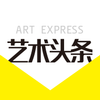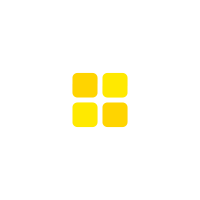分享到微信,
请点击右上角。
再选择[发送朋友]
或[分享到朋友圈]

南溪:
看了原作,彻底打消了我的怀疑,冀少峰“从二维走向三维”的立论的确可以成立。
从平面绘画中梦游般地凸显出3D图像,而且不借助双色眼镜,实在太神奇了,我以前从未经验过。特别是你拿给我看的那本英文画册《异度空间》,里面的图像比你的绘画更神奇,简直像是撞上了魔鬼。
离开你的画室后,我开始想一个问题:你的水墨画中为什么要挪用这种视觉游戏?仅仅为了让观众惊奇地跳起来吗?当然不是,我很赞同你的见解:“并非为了3D而3D,而是为了寻找一个更宽广的当代艺术语言”。
语言是指向意涵的,意涵何在?
与古典艺术不同,当代艺术的创作过程不一定是先有意涵再去寻找表达意涵的语言。它往往是先有创意,然后去挖掘创意背后埋藏着的意涵,进而,创意围绕意涵去生发,最终,创意转化为与意涵丝丝入扣的语言。
按我个人的理解,你的晕点、“原色点”,以及3D图像,一以贯之地隐藏着一种意涵:真与幻。性的真与幻,国家机器的真与幻,金钱的真与幻等等。
按日常逻辑,真与幻是可以弥合的,所谓“假的就是假的,伪装必须剥去”,便是最常规的弥合之途。
然而,按道学之形而上理解,在终极的意义上,真与幻是无所谓弥合的:真即是幻,幻即是真;无真无幻,亦幻亦真;真幻两仪,本源不分。“庄周梦蝶”即是此意。
我上封信中所说的“双核问题”如果真能展开,你的艺术的基本内涵便指向了“南溪梦蝶”——南溪之真与幻。
祝好
刘骁纯
2010年7月17日星期六 北京
Discussion on "From 2D to 3D" between Professor Liu Xiaochun and Nan Qi: Letter III
Dear Nan Qi,
Now that I have seen your new works in person, my cynicism regarding the implementation of 3D images in ink and wash has disappeared, and I find that I must agree with Ji Shaofeng's arguments on "From 2D to 3D".
The 3D images stand out from the flat paintings like magic, and without requiring the use of two-tone glasses or stereo lenses - something I find amazing. No less amazing were the images you showed me in your book of stereoscopic images, entitled "Another Dimension 2", which were something akin to being confronted with sorcery.
After leaving your studio, I had time to ponder on the purpose of your forays into 3D images in ink and wash. Are these paintings created simply to astound and amaze the viewer? I think not. These "3D Ink and Wash" paintings are not created for the sake of novelty, but in the pursuit of discovering a new artistic 'language' in which to express yourself.
Since all language is derived from a necessity to communicate, I ask myself what it is that you wish to communicate through these new and exciting works.
The creative processes driving contemporary and classical Chinese art are wildly different, particularly in the sense that in classical art, the artist first contemplates the message that he wishes to convey before creating a 'language' in which to express himself, whereas in much contemporary art, the 'language', or mode of expression, is the primary element, and the meaning conveyed is derived by the viewer.
Personally, I feel that the meaning of your own works can be seen primarily in your use of "dots"; both the "tricolour dots" and your original ink dots are the language in which you choose to express themes and ideas such as the perception of reality and illusion, the changing collective and individual consciousness in China, and the replacement of old idols with the new.
Logically speaking, one could merge the concepts of illusion and reality, creating a new kind of reality. However, according to the metaphysical theories of Taoism, it is impossible for 'reality' to exist without the concept and acceptance of 'illusion'; there is no need to merge the two concepts, since one cannot exist without the other, and together they create a balance that allows human perception. The allegorical tale of "Chang Chou Dreams a Butterfly" perfectly illustrates this point.
If we can find a way to fully develop the idea of allowing paradoxical ideas to exist in your work, in the form of the individuality and the collective power of your "dots", the core principle behind this new branch of art could in fact be named "Nan Qi Dreams a Butterfly"!
Best wishes,
Liu Xiaochun
17th July 2010
Beijing
作者:刘骁纯

分享到微信,
请点击右上角。
再选择[发送朋友]
或[分享到朋友圈]

